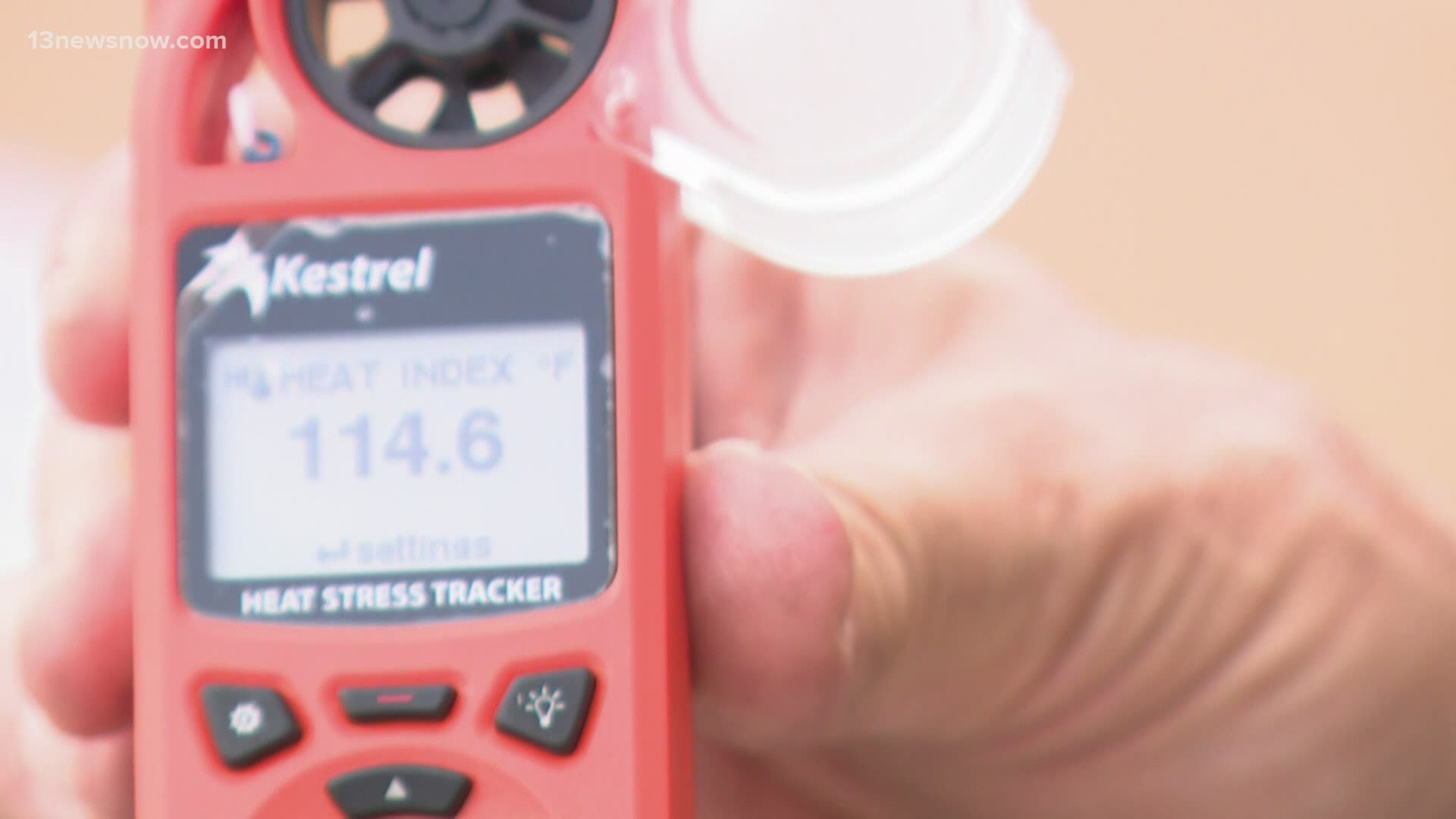NORFOLK, Va. — "There's two things we're concerned about: first is heat exhaustion. Second -- which is an emergency -- is heatstroke," said David Dyer, an athletic trainer with CHKD.
The hospital works with local school systems, including Virginia Beach and Norfolk, on heat safety guideline implementation. He said heat exhaustion typically precedes heatstroke.
"Somebody that's beginning to experience heat exhaustion may start to get irritable, have a hard time paying attention during practice. They might be dizzy or get sick to their stomach," said Dyer.
Athletes experiencing heatstroke may become incoherent and even lose consciousness. There's also one key indicator of heatstroke that may not be what you expect.
"If you take a peek at their skin, you'll notice that they've stopped sweating. The body is in such a crisis that it's no longer able to keep its systems going," Dyer said cautiously. He noted that in contrast, heat exhaustion actually leads to profuse sweating.
So, what are some things athletes and administrators can do to prepare for the heat?
"What you'll see from public schools is that we mandate climatization days in which no equipment is allowed, getting athletes out in the heat to see how they respond," Dyer said. Climatization allows athletes to acclimate to the heat without equipment such as pads or helmets, which prevent heat from naturally leaving the body.
"Make sure that you're hydrated, drinking water, and you've got good nutrition. Hydration is critical in maintaining body temp because it’s how we produce sweat and that's how we cool the body."
While sweat cools the body, it can only do so much, which is why the final tip is:
"Monitor, monitor, monitor trainers, coaches, athletes themselves. Be mindful of the environment that you're in," Dyer said.

